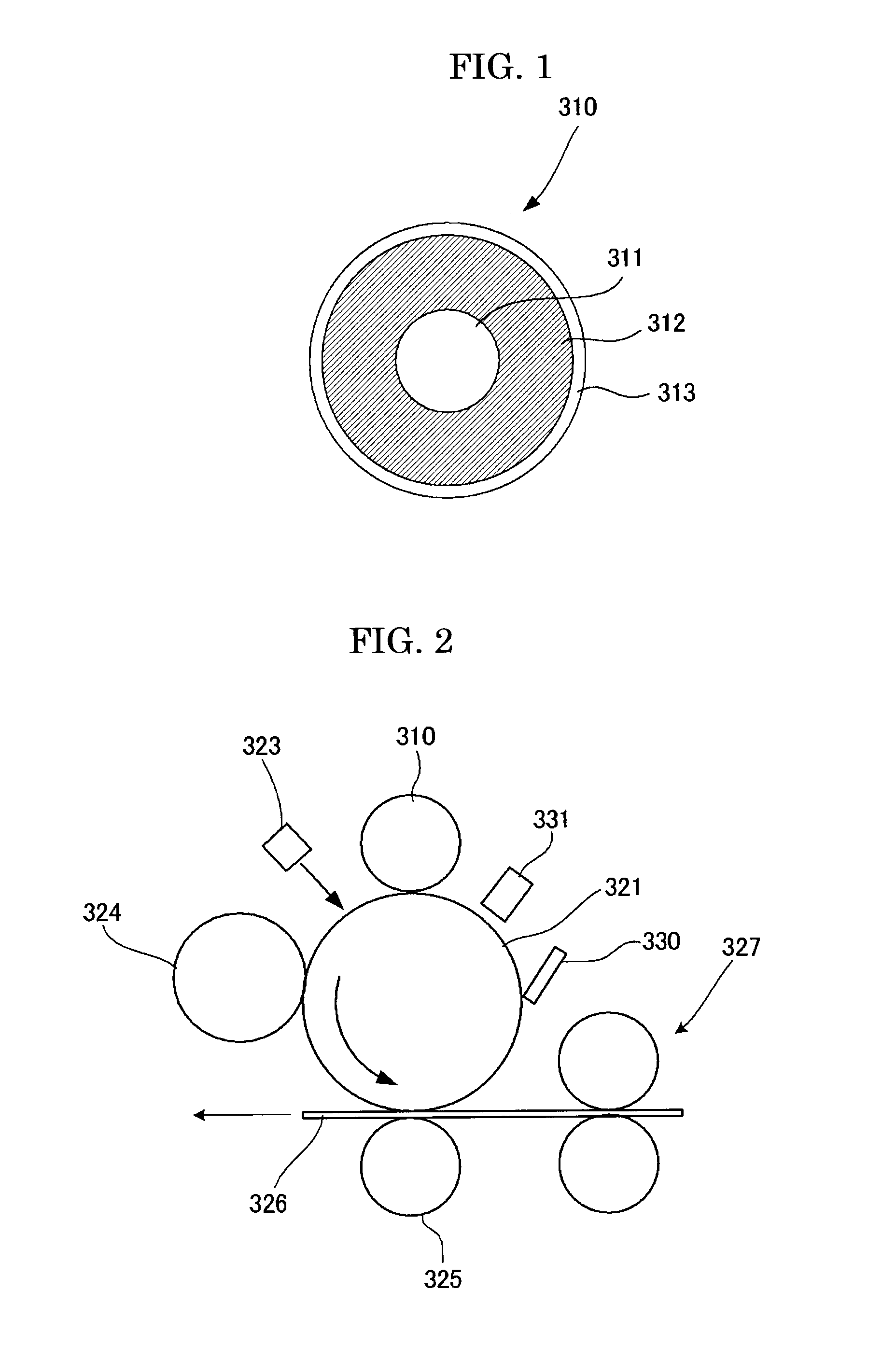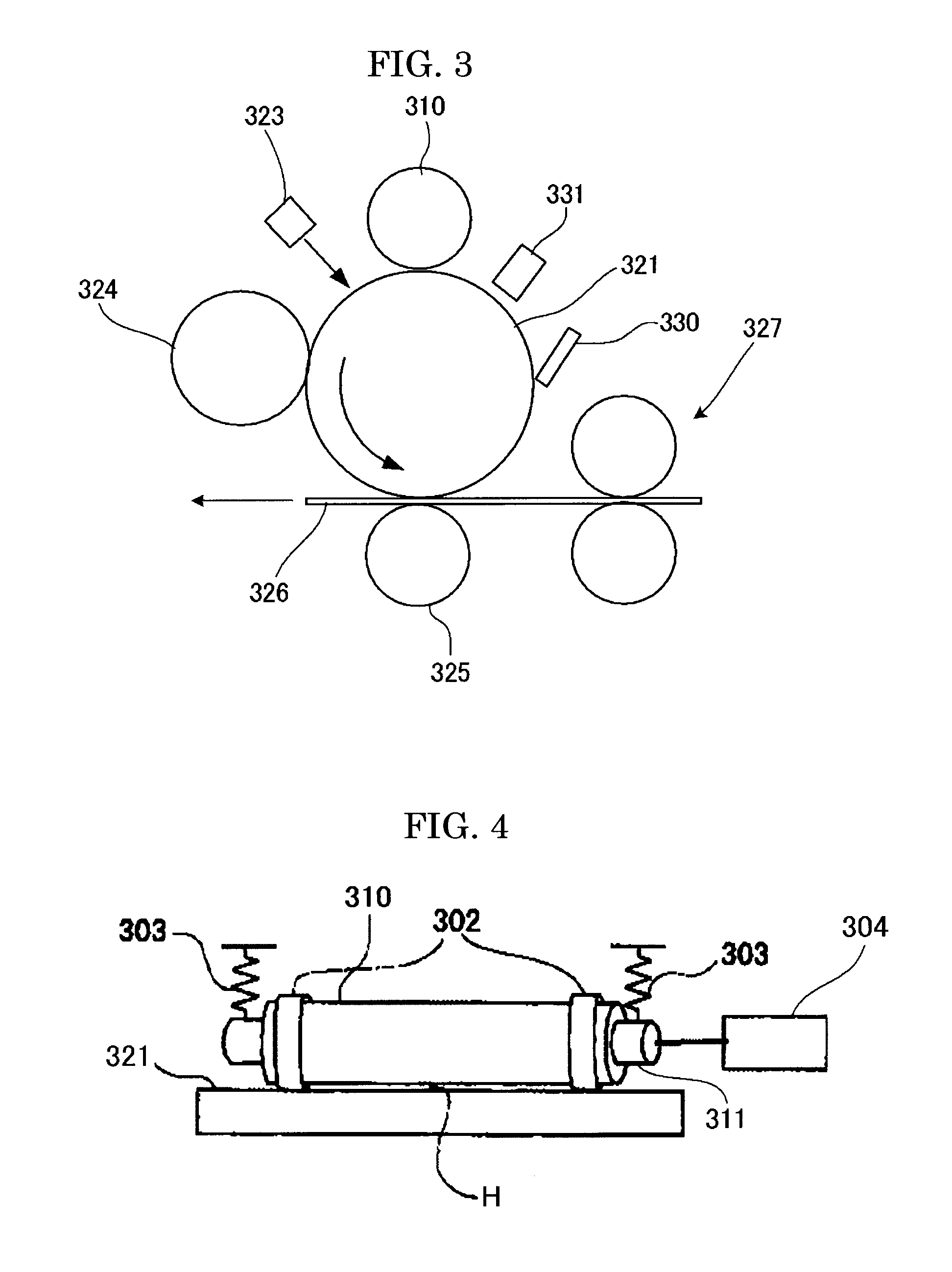Image forming apparatus, image forming method and process cartridge
a technology of image forming apparatus and process cartridge, which is applied in the direction of electrographic process, instrumentation, corona discharge, etc., can solve the problems of thermal responsiveness deterioration, increase of the entire image forming apparatus, and high cost, and achieve excellent low-temperature fixation properties, high-quality images, and excellent anti-offset properties.
- Summary
- Abstract
- Description
- Claims
- Application Information
AI Technical Summary
Benefits of technology
Problems solved by technology
Method used
Image
Examples
synthesis example 1
-Purification of Rosin-
[0457] In a 2,000 ml volumetric distilling flask equipped with a distilling tube, a reflux condenser and a receiver, 1,000 g of a tall rosin (glass transition temperature (Tg)=37.2° C.) was added, followed by distillation under reduced pressure of 1 kPa to collect a distillate at 195° C. to 250° C. as a fraction. Hereinafter, a tall rosin subjected to purification is referred to as an unpurified rosin and a rosin collected as a fraction is referred to as a purified rosin (glass transition temperature (Tg)=39.2° C.).
[0458] Twenty grams of each rosin was pulverized in a coffee mill (National MK-61M) for 5 seconds and passed through a sieve with an opening size of 1 mm, and then 0.5 g of the rosin powder was weighed in a 20 ml-vial for head space. After sampling a head space gas, impurities in an unpurified rosin and a purified rosin were analyzed in the following manner using the head space GC-MS method. The results are shown in Table 1.
[0459] A. Head Space ...
synthesis example 2
-Synthesis of Acrylic Acid-Modified Rosin A-
[0488] In a 10 L volumetric flask equipped with a distilling tube, a reflux condenser and a receiver, 6,084 g (18 mol) of a purified rosin (SP value: 76.8° C.) and 907.9 g (12.6 mol) of acrylic acid were added. After heating from 160° C. to 220° C. over 8 hours, the reaction was performed at 220° C. for 2 hours and distillation was performed under reduced pressure of 5.3 kPa to obtain an acrylic acid-modified rosin A. A SP value of the resulting acrylic acid-modified rosin A was 110.4° C. and the degree of modification with acrylic acid was 100.
synthesis example 3
-Synthesis of Acrylic Acid-modified Rosin B-
[0489] In a 10 L volumetric flask equipped with a distilling tube, a reflux condenser and a receiver, 6,084 g (18 mol) of a purified rosin (SP value: 76.8° C.) and 648.5 g (9.0 mol) of acrylic acid were added. After heating from 160° C. to 220° C. over 8 hours, the reaction was performed at 220° C. for 2 hours and distillation was performed under reduced pressure of 5.3 kPa to obtain an acrylic acid-modified rosin B. A SP value of the resulting acrylic acid-modified rosin B was 99.1° C., the glass transition temperature was 53.2° C., and the degree of modification with acrylic acid was 66.
PUM
| Property | Measurement | Unit |
|---|---|---|
| Temperature | aaaaa | aaaaa |
| Temperature | aaaaa | aaaaa |
| Temperature | aaaaa | aaaaa |
Abstract
Description
Claims
Application Information
 Login to View More
Login to View More - R&D
- Intellectual Property
- Life Sciences
- Materials
- Tech Scout
- Unparalleled Data Quality
- Higher Quality Content
- 60% Fewer Hallucinations
Browse by: Latest US Patents, China's latest patents, Technical Efficacy Thesaurus, Application Domain, Technology Topic, Popular Technical Reports.
© 2025 PatSnap. All rights reserved.Legal|Privacy policy|Modern Slavery Act Transparency Statement|Sitemap|About US| Contact US: help@patsnap.com



